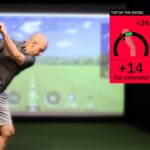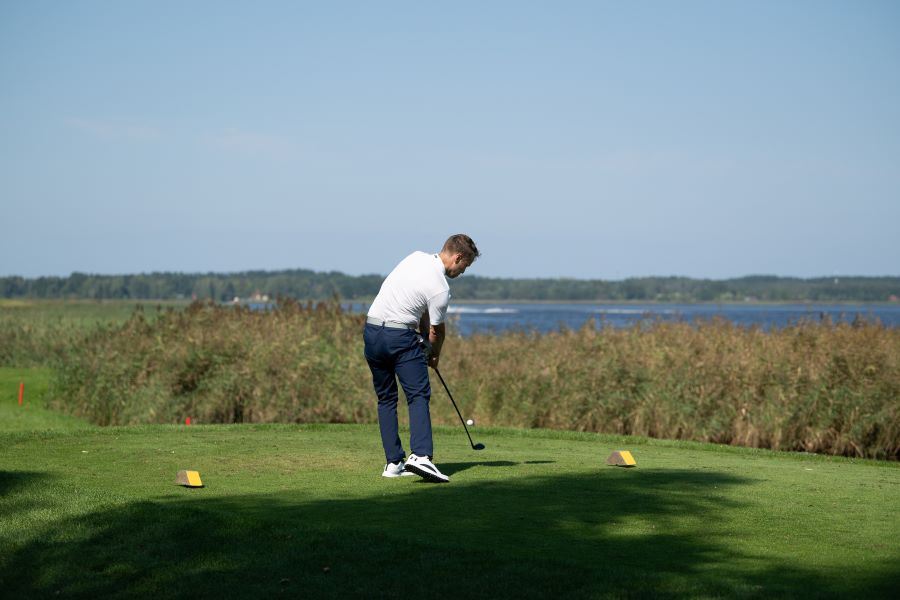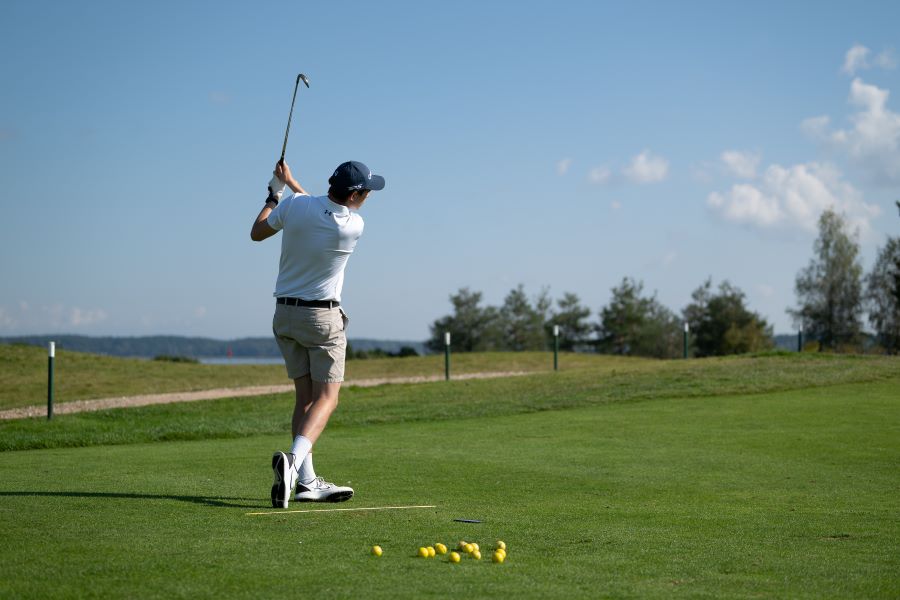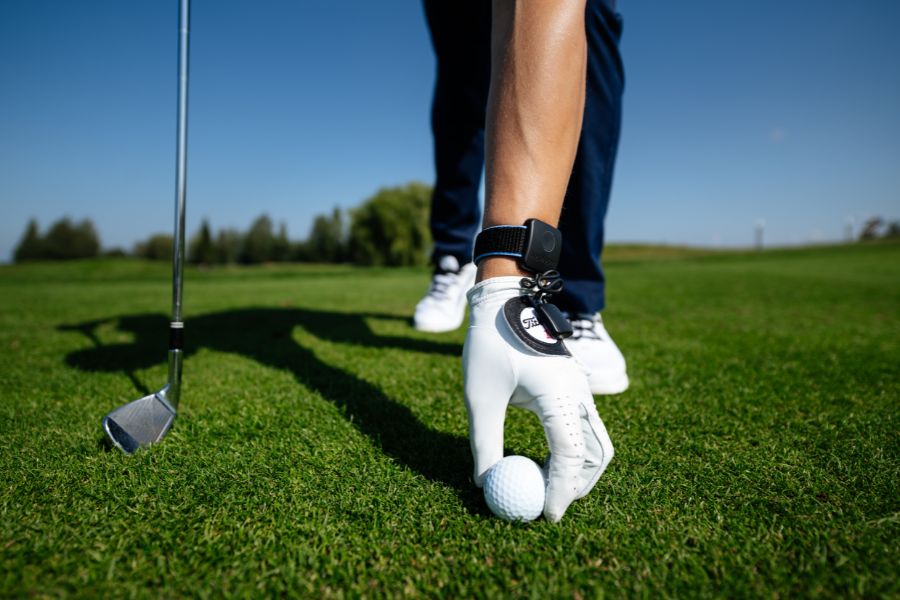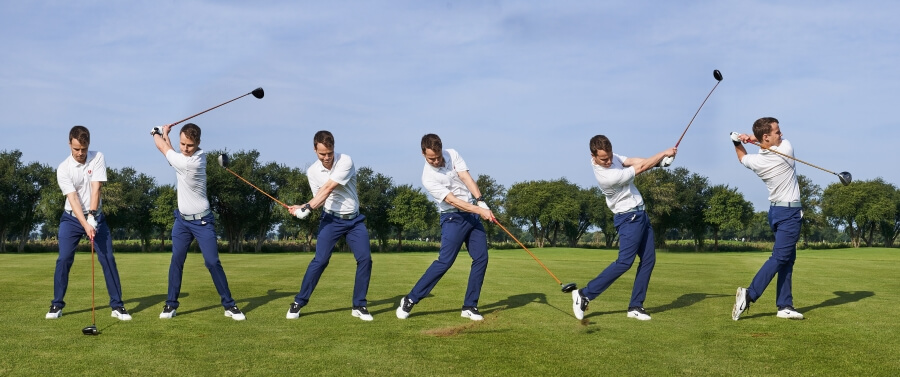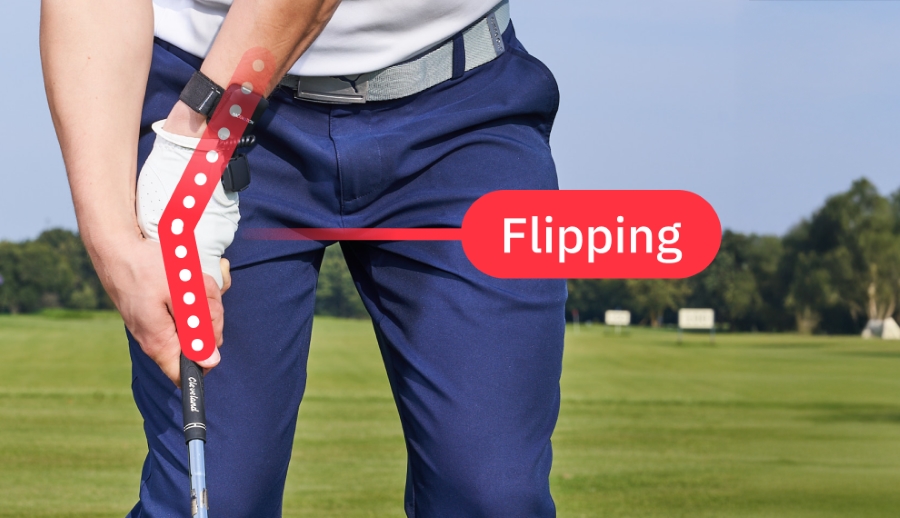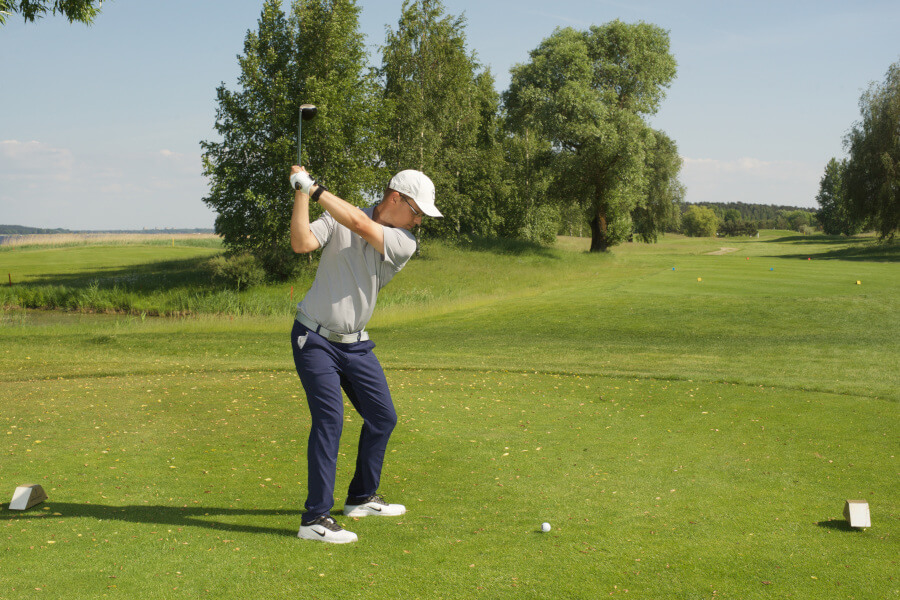Fixing Heel Shots in Golf: Causes & How to Stop Them
Hitting the ball off the feel can feel like a “thud” when you make contact.
The ball usually has a hard time getting up off the ground; it typically travels well left of the target, and you’ll be trying to recover on your next shot. Heel shots need to go.
We will quickly go through the reasons why heel shots happen and then give you the exact ways to fix them.
The heel is not that far from the center of the clubface so if you can make some small tweaks you should be able to get this figured out.
Heel Shots in Golf (Key Takeaways)
Here are a few of the most important things to know about a heel shot in golf and how to fix it.
- Improper wrist rotation, especially holding lag too long, can lead to heel shots. Start working on wrist rotation from the top of the backswing.
- An overactive upper body rotation in the downswing can cause heel strikes.
- Focus on leading the downswing with the lower body and keeping the upper body more passive.
- A simple trick to quickly eliminate heel shots is to keep the right foot down longer during the downswing; your knee won’t move toward the ball incorrectly.
- Maintain a bent trail arm through impact, if the club extends the ball will make impact on the heel of the club.
Why do I Hit Heel Shots?
There are a few different reasons you may hit heel shots, and many of them are caused by too much movement in the body.
Here are some of the top reasons why you may be striking the ball on the heel.
- Overactive Upper Body in Transition: if you are rotating the upper body too much or too early in the downswing, expect it to change the clubface position and cause a heel strike.
- Right Heel Lifting in Downswing: it’s good to transition that weight forward but let it happen as more of a rotation. If the right knee and hip move toward the ball, so will the clubhead.
- Extending the Trail Arm Too Soon: extending the lead arm is good; if you extend the trail arm too early, you’ll push the club out and away from you.
- Holding Lag Too Long: if you try to hold your lag position or keep the wrist from rotating too long, you’ll open the clubface too much and make contact with the heel.
- Pulling Down With The Arms: let your downswing start with a rotation of your legs, and let the arms pull down just after.
Effective Ways to Fix Heel Shots in Golf
Now that you have some of the causes figured out, let’s get into how to fix heel shots in golf.
Calm the Upper Body When Swinging Down
Have you ever considered what part of your body leads when you swing down from the top?
If you are hitting off the heel, there is a good chance your upper body is making more of a dive towards the ball instead of your lower body leading the way.
Focus some swings on having a passive upper body during the transition. You’ll use the lower body and mid-torso to lead and keep the upper body from moving.
Keep the Right Heel Down
The right heel is not something that is often talked about in the golf swing.
However, paying attention to the right heel can teach you a bit about your tendencies in the downswing. Avoid lifting the right heel early.
Instead, keep the right foot down just a little longer and rotate into the left side. As soon as it moves up onto the toe, your head is likely moving towards the ball, and you’ll strike the heel.
You can put a golf club or a golf ball under the toe of the foot to ensure you keep the heel down. It will help you feel this position and how powerful it can be.
Focus on Extension in Lead Arm
Extending your lead arm through impact is important. However, some golfers get the misconception that extension in both arms is the goal.
This is not the case. Keep the trail arm bent through impact!
Leaving the arm bent ensures that the club does not move forward too much and strikes the ball with the heel of the club.
Let the Wrist Start Rotating from The Top
After analyzing more than 1,000,000 golf swings and studying what it takes to square the clubface at impact, we have found that the golfers who strike the ball with the most consistency start by initiating a wrist rotation from the top of the backswing.
If you leave the clubface open, with too much extension in the lead wrist, then you will deliver the club to the ball in a position where it hits the heel and not the center.
One great drill to work on this is the motorcycle drill. You can use this drill to start to rotate your wrist to a more flexed position on the downswing creating a square clubface and a better strike.
The idea is to feel that motion of revving the motorcycle throttle in your lead wrist on the downswing.
This is one of the most famous wrist action drills in golf, and you can work on it in real-time using the HackMotion app.
Motorcycle Drill – Master Wrist Flexion in the Downswing
Focus on continuously adding flexion until the club reaches parallel, then smoothly complete your swing.
HackMotion Motorcycle Drill – Step by Step:
- Normal Setup: A slight extension in the lead wrist is normal at address.
- Swing to the Top: Pause at the top position.
- Motorcycle Twist: In transition, it feels like you’re twisting the throttle “off.” This moves the lead wrist into flexion, closing the face.
- HackMotion Feedback: See if your extension data drops into the flexion range.
- Adjust Ball Flight: Too much flexion might cause hooks; not enough keeps the face open.
Work on that Lower Body Pivot
The better you can get your lower body to work, the easier it is to lead with the lower body on the downswing. You can make this motion too extreme and get yourself into a bad position.
However, the key is to at least initiate the downswing with the lower body.
Many golfers wonder why they can’t do this. Sometimes, it has to do with a lack of lower body rotation in the backswing.
Make sure your body turns on the way back, and then you’ll have an easier time getting this sequence to work on the downswing.
Drills to Stop Heel Shots
If you still need a few solutions for how to stop heel shots, these are a few to consider. Each one gives you the feeling of striking the ball in the center of the face and making great contact.
Alignment Stick Right Leg Drill
This simple drill will help you determine if your right heel is coming off the ground sooner than it should and causing you to move closer to the ball.
Simply set up to hit and then put an alignment stick into the ground at an angle so it rests on your shin.
As you swing back, the stick should be low enough that it does not get in your way. When you swing down, just ensure your leg doesn’t bump into the alignment stick.
Stand on Golf Club Drill
Take two golf clubs out of your bag and stand on the grip end of each one.
As you swing back and forth, pay attention to where your weight is. If you are moving towards the ball, you will feel it, and it will cause you to fall forward.
Any type of drill that can exaggerate a feeling for you is a great way to make an adjustment and get your game back to where you want it.
Hit the Tee Drill
This unique drill has you flip your club around and try to strike the tee with the grip end of the club instead of the clubhead end.
Set up to hit with a golf ball just in front of a tee. Flip the club and swing to try and make contact with just the tee and not the ball. This one may take a little practice to get right.
Final Thoughts
At this point, you should be able to get your club back on the right path and start moving the strike closer to the center of the clubface.
Use your HackMotion to decrease the amount of extension in your lead wrist. Work on getting the clubface squared right from the top and letting your lower body lead the way.
Remember, heel strikes are very close to being great shots; you just have to make these minor adjustments to see the differences.



